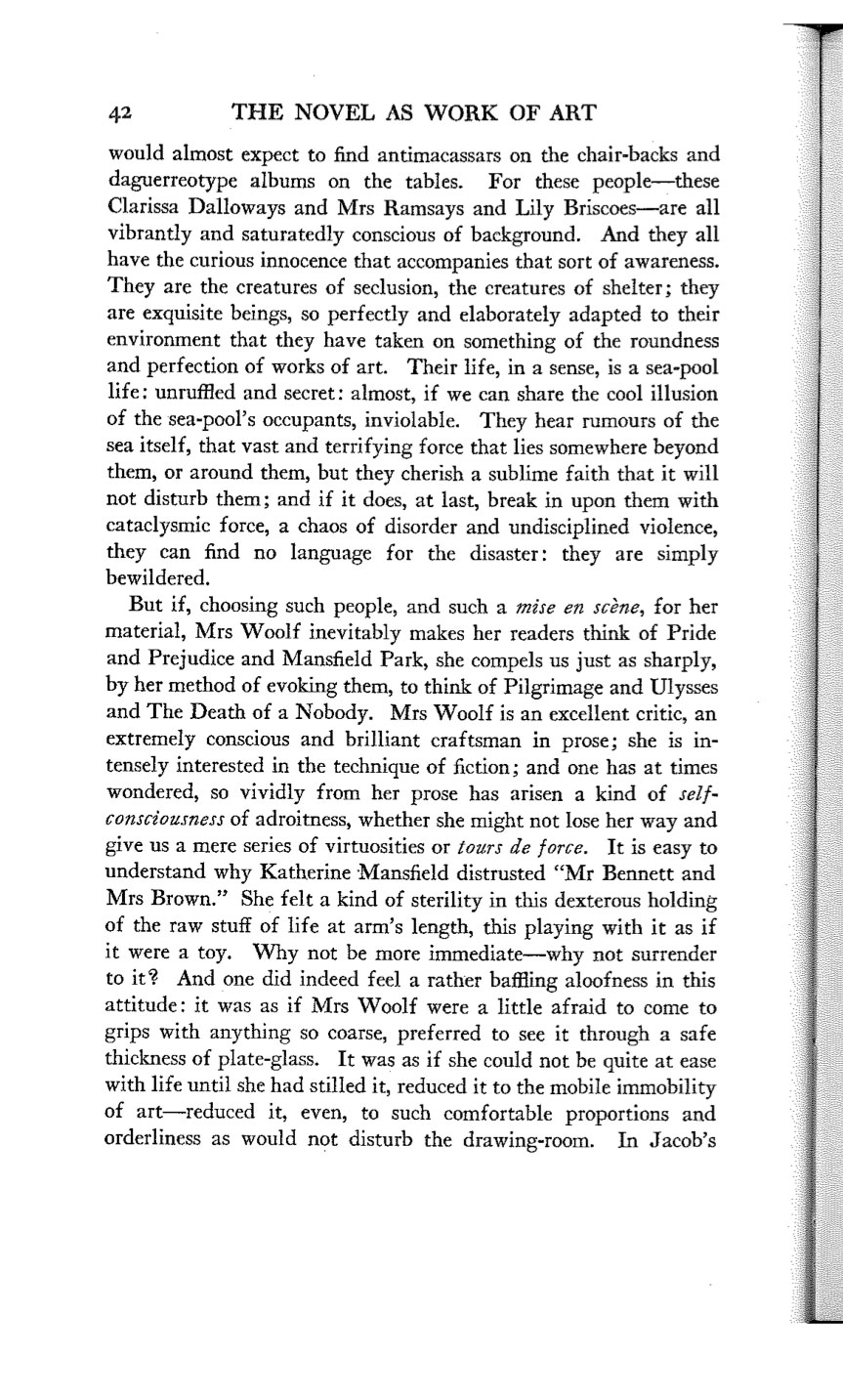
would almost expect to find antimacassars on the chair-backs and
daguerreotype albums on the tables. For these people—these
Clarissa Dalloways and Mrs Ramsays and Lily Briscoes—are all
vibrantly and saturatedly conscious of background. And they all
have the curious innocence that accompanies that sort of awareness.
They are the creatures of seclusion, the creatures of shelter; they
are exquisite beings, so perfectly and elaborately adapted to their
environment that they have taken on something of the roundness
and perfection of works of art. Their life, in a sense, is a sea-pool
life: unruffled and secret: almost, if we can share the cool illusion
of the sea-pool’s occupants, inviolable. They hear rumours of the
sea itself, that vast and terrifying force that lies somewhere beyond
them, or around them, but they cherish a sublime faith that it will
not disturb them; and if it does, at last, break in upon them with
cataclysmic force, a chaos of disorder and undisciplined violence,
they can find no language for the disaster: they are simply
bewildered.
But if, choosing such people, and such a mise en scène, for her
material, Mrs Woolf inevitably makes her readers think of Pride
and Prejudice and Mansfield Park, she compels us just as sharply,
by her method of evoking them, to think of Pilgrimage and Ulysses
and The Death of a Nobody. Mrs Woolf is an excellent critic, an
extremely conscious and brilliant craftsman in prose; she is intensely
interested in the technique of fiction; and one has at times
wondered, so vividly from her prose has arisen a kind of self-
consciousness of adroitness, whether she might not lose her way and
understand why Katherine Mansfield distrusted “Mr Bennett and
Mrs Brown.” She felt a kind of sterility in this dexterous holding
of the raw stuff of life at arm’s length, this playing with it as if
it were a toy. Why not be more immediate—why not surrender
to it? And one did indeed feel a rather baffling aloofness in this
attitude: it was as if Mrs Woolf were a little afraid to come to
grips with anything so coarse, preferred to see it through a safe
thickness of plate-glass. It was as if she could not be quite at ease
with life until she had stilled it, reduced it to the mobile immobility
of art—reduced it, even, to such comfortable proportions and
orderliness as would not disturb the drawing-room. In Jacob’s






